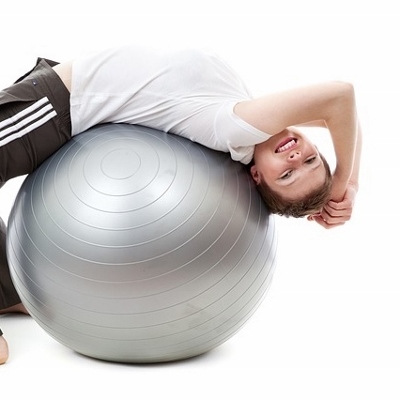 You should exercise. You know that, intellectually. But what if you have a debilitating illness that causes you daily pain and limits your mobility? Then you should exercise! People with arthritis can exercise, despite the body’s seemingly endless objections. (You know you should exercise, BUT it hurts too much; you know you should, BUT you’re too stiff; you know you should, BUT exercising might make it worse.) In fact, exercise is a key factor in combating arthritis pain because is it increases mobility and flexibility, strengthens muscle, improves the function of the heart and lungs, builds stamina, gives you energy, reduces stress, controls weight, and just generally makes you feel better. Not enough reasons to get off your BUT? How about the fact that regular moderate exercise is proven to reduce arthritis pain and stiffness and minimize the frequency of flare ups?
You should exercise. You know that, intellectually. But what if you have a debilitating illness that causes you daily pain and limits your mobility? Then you should exercise! People with arthritis can exercise, despite the body’s seemingly endless objections. (You know you should exercise, BUT it hurts too much; you know you should, BUT you’re too stiff; you know you should, BUT exercising might make it worse.) In fact, exercise is a key factor in combating arthritis pain because is it increases mobility and flexibility, strengthens muscle, improves the function of the heart and lungs, builds stamina, gives you energy, reduces stress, controls weight, and just generally makes you feel better. Not enough reasons to get off your BUT? How about the fact that regular moderate exercise is proven to reduce arthritis pain and stiffness and minimize the frequency of flare ups?
The notion that people with arthritis can exercise was once doubted, even among health professionals, but years of research have indicated that not only can people with arthritis exercise, it is essential to treatment and management of the disease. So, armed with that knowledge, how do choose an exercise program that is right for you? You need to integrate three types of exercise for an effective routine. These are range-of-motion exercises to improve mobility and flexibility, strengthening exercises to build muscle around the joints, and cardiovascular exercise to give you increased energy and stamina.
Range-of-motion exercises include gentle stretching and rotation of limbs, and serves as a warm up for the rest of your routine. Stretching should be done twice daily, before and after you exercise. This allows your muscles to warm up and cool down. There are two basic types of muscle strengthening exercises: isotonic and isometric. Isotonic exercises involve working the muscles by moving the joints; isometrics work the muscles without moving the joints, so people with arthritis can exercise this way easily. These should be done every other day. Cardiovascular, or aerobic, exercise – like walking, biking or swimming – increases your heart rate, improves blood flow, reduces stress, and helps with weight control. You should make this part of your daily routine and try to achieve at least 30 minutes a day for maximum benefit.





